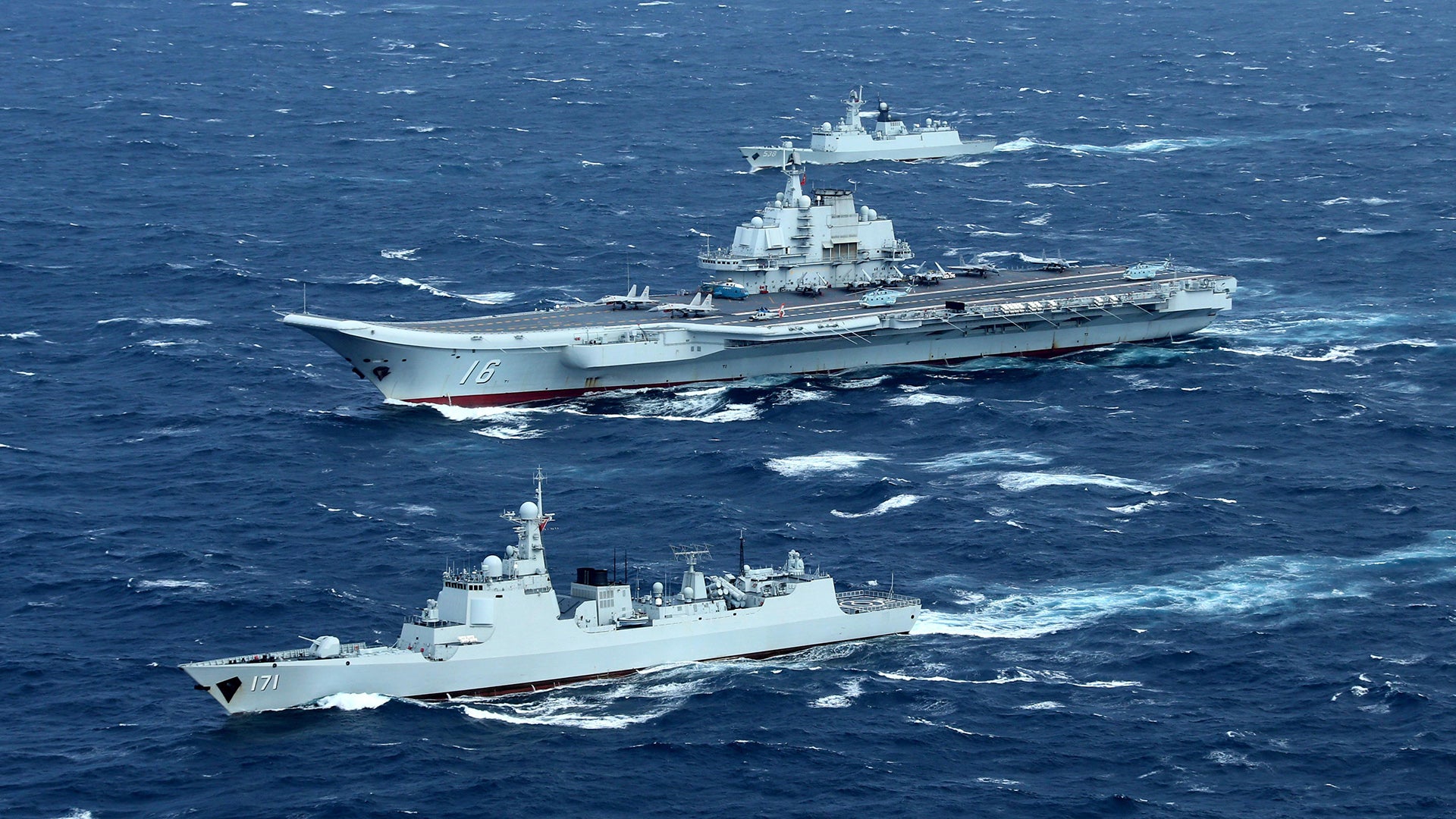China’s first aircraft carrier, the Liaoning, passed through the Miyako Strait, just southwest of Okinawa, on Sunday. The reworked Russian-built carrier appeared to be traveling with a retinue of five ships that make up its strike group.
According to a report from the Japan Self Defense Forces, the group included:
- 2 Type 052D Luyang class destroyers
- 1 Type 055 Renhai class missile destroyer
- 1 Type 054A Jiangkai class II frigate
- 1 Type 901 Fuyu class fast combat support ship

Additionally, the JSDF detected a Shaanxi Y-9 flying over the Miyako Strait, and ultimately scrambled to intercept it. China has uniquely configured Y-9s for a number of roles. Usually, they are of the electronic surveillance or maritime patrol type when they are involved in an incident like this. That way, the aircraft can monitor the response to the vessels’ presence and garner valuable intelligence on a nation’s readiness and sources and methods used to track the flotilla.


In recent years, Japan has routinely scrambled aircraft to intercept territorial incursions, largely in reaction to Chinese overflights. According to the Japanese Ministry of Defense, there have been thousands of such scrambles in recent years.
While the Miyako Strait provides a narrow passage of international waters through Japan’s exclusive economic zone, it is widely seen as a highly strategic waterway. Speaking to The Diplomat, a specialist in Chinese security affairs for the United States Air Force, Ben Lowsen, said, “Chinese strategists see these passages as crucial to their ability to deploy forces beyond the first island chain.”
The Liaoning’s movements, while legal under international law, demonstrate Beijing’s increasingly assertive posture and their growing familiarity with integrated carrier strike group operations in the open ocean.
In addition to the Y-9 intercept, during the same period of time, Taiwan reported aircraft incursions in their airspace. Taiwan’s Ministry of Defense reported an overflight from a PLA Shaanxi Y-8 transport over the Taiwan Strait:

Provocative ship movements are also nothing new in the region. The Liaoning previously crossed the Miyako Strait with its strike group in April 2020, creating international headlines. At the time, China boasted the only operational aircraft carrier in the region after the USS Theodore Roosevelt and USS Ronald Reagan were forced pier-side due to COVID-19. The Chinese carrier’s first transit through the strait occurred five years ago, in 2016.

The carrier’s move also comes at a tense time in other contested areas that China is asserting its growing might over, namely in the South China Sea. On March 22 the Philippines demanded that China remove more than two hundred vessels spotted near a disputed reef. A recent expose by Foreign Policy demonstrated that dozens of the vessels are part of the People’s Armed Forces Maritime Militia (PAFMM), following a categorical denial from Chinese officials.
While this most recent incident in the South China Sea is another in a long line of aggressive acts orchestrated by the Chinese in the littorals, Liaoning moving out beyond the first island chain with a mature strike group is a reminder of the People’s Liberation Army Navy’s blue-water ambitions. These are only set to grow as the country’s naval capabilities and overall capacity to project power afar continue to improve.
With Liaoning and its indigenously-build clone, Shandong, now operating with their carrier strike groups on a regular basis, as well as China’s third carrier—the Type 003—deep under construction in Shanghai, and more advanced carriers in development, Beijing’s commitment to the power-projection capabilities of the aircraft carrier is crystal clear.
Contact the editor: Tyler@thedrive.com
